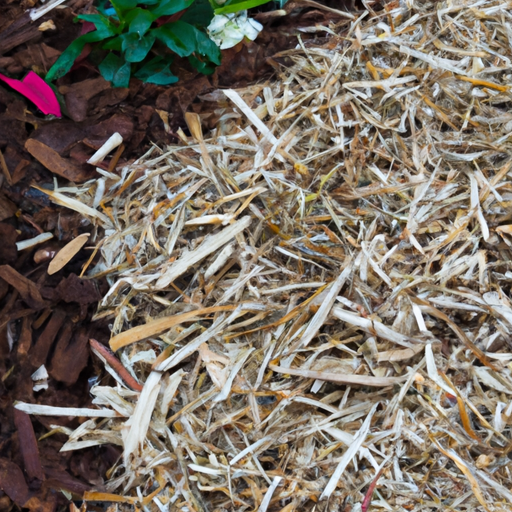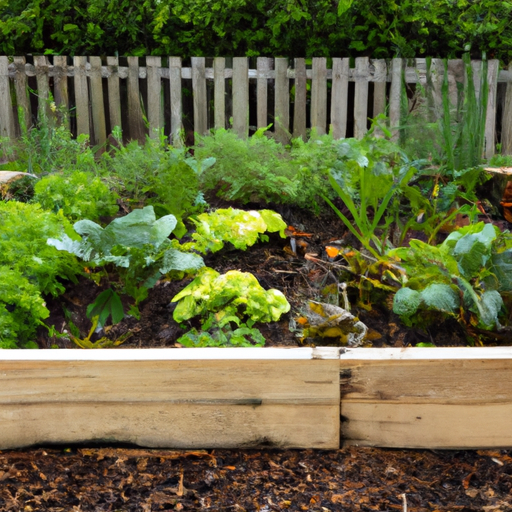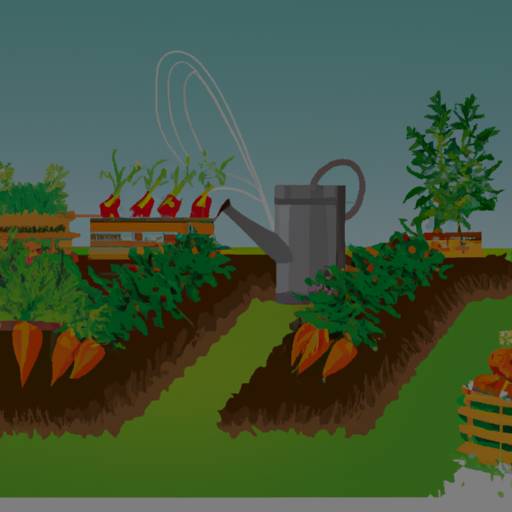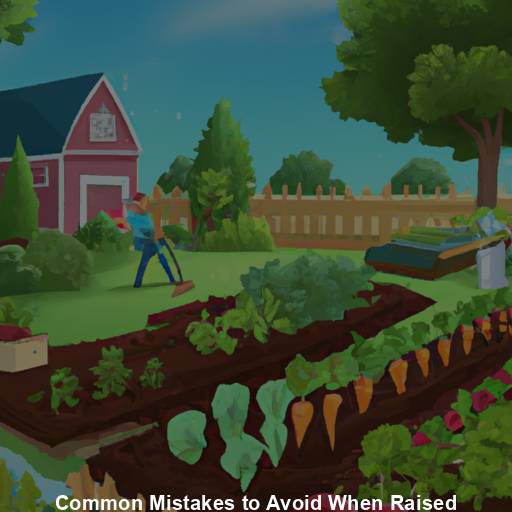Hello fellow gardeners! If you’re looking for a way to improve your soil, control weeds and retain moisture in your plants, then organic mulching is the answer.
Mulch is any material that’s spread over the soil surface to protect it from extreme weather conditions while providing nutrients to the plants as it decomposes.
In this beginner’s guide, we’ll be exploring everything you need to know about organic mulching – from what materials are best suited for different types of plants, how much mulch to apply, and when to add more.
With these tips and tricks up your sleeve, you’ll soon become an expert at keeping your garden healthy and thriving all year round.
So grab a cuppa tea and let’s get started!
Understanding The Benefits Of Organic Mulching
Organic mulching is like a blanket for your garden, protecting it from the harsh elements of nature. As a Master Gardener, I highly recommend this practice to not only protect but also nourish your plants.
Composting benefits are plentiful when using organic mulch as it breaks down over time and adds important nutrients back into the soil. There are various types of organic mulch available such as leaves, grass clippings, straw, and wood chips – each with its unique set of advantages.
By incorporating these materials in your garden beds or around trees and shrubs, you can reduce water loss due to evaporation while also suppressing weed growth. Overall, understanding the benefits of organic mulching is crucial for any gardener looking to cultivate healthy and thriving greenery without relying on harmful chemicals or synthetic fertilizers.
Choosing The Right Mulch For Your Plants
Now that we have a clear understanding of the various benefits of organic mulching, let’s delve into choosing the right type of mulch for your plants.
The first thing to consider is the requirements of your specific plant species. Some plants prefer more acidic soil while others require better drainage, so it’s important to choose a mulch that caters to these needs.
There are several types of organic mulches available such as straw, leaves, grass clippings and wood chips – each with its own unique characteristics and advantages. For instance, shredded bark or wood chips can help suppress weeds and retain moisture in the soil while also adding nutrients back into the earth over time.
On the other hand, straw is ideal for vegetable gardens as it allows air circulation around delicate stems and roots while still preserving moisture levels in soil.
Ultimately, selecting the right type of mulch will not only improve overall plant health but also reduce maintenance efforts by minimizing weed growth and conserving water usage.
How To Properly Apply Mulch
Now that you’ve selected the appropriate mulch for your garden beds, it’s time to learn how to properly apply it.
First and foremost, make sure the area is free of weeds and debris before laying down any mulch. This will ensure maximum contact between the soil and mulch, allowing for proper water absorption and nutrient retention.
When applying the mulch, use a rake or other suitable tool to spread it evenly across the bed, making sure to avoid piling it up against tree trunks or plant stems as this can lead to moisture buildup and disease.
It’s important not to over-mulch either; 2-3 inches should suffice in most cases. If using organic material like leaves or grass clippings, be aware that they may decompose quickly and need replenishing throughout the growing season.
Lastly, invest in quality mulching equipment such as a wheelbarrow or pitchfork to make spreading easier on yourself and achieve better results overall.
With these simple mulching techniques in mind, your garden will thrive with healthy plants and nutrient-rich soil all season long!
Maintaining Your Mulch For Optimal Results
Let’s say you’ve just mulched your garden beds with a beautiful dark brown organic material. Now, how do you maintain that gorgeous look and ensure optimal results for your plants? Here are some tips:
– Keep an eye on the mulch color: Over time, the color of your mulch will naturally fade due to exposure to sunlight and weathering. If it starts to turn gray or lighter in color, it may be time to add more.
– Check the thickness regularly: Ideally, your mulch should be between 2-3 inches thick. As it decomposes over time, it will become thinner. Add more as needed to keep up that ideal depth.
– Avoid piling too much around plant stems: While you want enough mulch to provide adequate coverage, avoid creating large mounds around the base of your plants. This can trap moisture against the stem and lead to disease.
As a Master Gardener, I recommend taking the time to check on your mulch every few weeks during the growing season. Maintaining proper thickness and color not only looks great but also helps retain moisture in soil while keeping weeds at bay.
By following these simple steps, you’ll enjoy healthier plants and a stunning garden all season long without having to constantly reapply new layers of fresh mulch!
Troubleshooting Common Mulching Issues
As with any gardening practice, organic mulching can come with its own set of challenges.
Two common issues that gardeners may experience are improper mulch depth and infrequent mulching. It is important to ensure that the mulch layer is not too thick or thin as this can affect plant growth and soil moisture levels. A general rule of thumb is to maintain a depth of 2-4 inches for most types of plants.
Additionally, it is crucial to replenish the mulch layer periodically as it breaks down over time. This will help maintain optimal soil conditions and prevent weed growth.
By paying attention to these factors, you can troubleshoot common mulching issues and enjoy the benefits of healthy, vibrant plants in your garden.
Frequently Asked Questions
What Are The Best Materials To Use For Organic Mulching?
When it comes to organic mulching, the best materials are those that offer a wide range of benefits and cost-effective options. But what exactly are these materials?
Well, as a Master Gardener, I can tell you that there are many different types of organic matter that make excellent mulch. From grass clippings and leaves to straw and wood chips, each material has its own unique set of advantages for your garden.
By using organic mulches in your landscape, you’ll not only reduce weed growth and conserve moisture but also enrich your soil with valuable nutrients over time.
So why wait? Start exploring the world of organic mulching today and experience all the amazing benefits that come with it!
How Often Should You Apply Organic Mulch To Your Garden?
To maintain a healthy garden, it is important to know how often to apply organic mulch. The benefits of organic mulching include reducing soil erosion, suppressing weed growth, and retaining moisture in the soil.
However, applying too much or too little can have negative effects on your plants. Common mistakes to avoid when applying organic mulch include piling it up against the base of plants and using materials that are not fully decomposed.
It is recommended to apply a layer of 2-3 inches once a year for most plants, but some may require more frequent applications. Always monitor the condition of your soil and adjust accordingly.
Remember, proper application of organic mulch will greatly benefit your garden’s health and appearance!
Can You Use Organic Mulch For Indoor Plants?
Indoor plants are a great way to spruce up your home, and using organic mulch can provide numerous benefits for them. The main benefit is that it helps retain moisture, which is crucial for the health of indoor plants.
Additionally, organic mulch can also add nutrients to the soil over time, promoting healthy growth. However, there are some drawbacks to consider as well. Organic mulch can attract pests such as fungus gnats or even mold if not properly maintained.
When choosing the type of organic mulch for indoor plants, opt for smaller options like shredded leaves or coconut coir to avoid any potential issues with space constraints. As a Master Gardener, I highly recommend incorporating organic mulch into your indoor plant care routine but proceed with caution and choose wisely!
Is There Any Risk Of Pests Or Diseases With Organic Mulching?
When it comes to organic mulching, pest management and disease prevention are important considerations. While there is a risk of pests and diseases with any type of gardening practice, proper maintenance and care can greatly reduce these risks.
One key factor in preventing pests and diseases is choosing the right organic materials for your mulch – avoiding diseased or insect-infested plant debris. Additionally, regularly turning and aerating your mulch pile can help prevent the buildup of harmful microbes that may contribute to disease development.
Overall, by taking a proactive approach to pest management and disease prevention through careful selection and proper maintenance of your organic mulch, you can create a healthy growing environment for your plants.
How Long Does Organic Mulch Last Before It Needs To Be Replaced?
Organic mulching is a great way to maintain the health of your garden while also being environmentally friendly.
One question that often arises when discussing organic mulch is how long it lasts before needing replacement.
The answer depends on many factors, including weather conditions and the type of material used for mulching.
However, with proper maintenance, organic mulch can last anywhere from six months to two years.
To ensure its longevity, regularly check the depth of the mulch and add more as needed.
This not only helps retain moisture in soil but also provides insulation against temperature fluctuations.
Additionally, be sure to turn over or rake out any compacted areas to prevent waterlogging and increase airflow.
In summary, understanding the benefits of organic mulching and how to properly maintain it will help you get the most out of this natural method of gardening.
Conclusion
So there you have it, my green-thumbed friends! A beginner’s guide to organic mulching.
Now that you know what materials are best for your garden and how often to apply them, you can start reaping the benefits of this magical soil enhancer.
But don’t forget, just like any relationship, your bond with your plants requires some maintenance. Keep an eye out for pests or diseases that may be lurking in your mulch, and replace it when necessary.
With a little love and care, your garden will thrive under the nurturing embrace of organic mulch.
Happy gardening!






